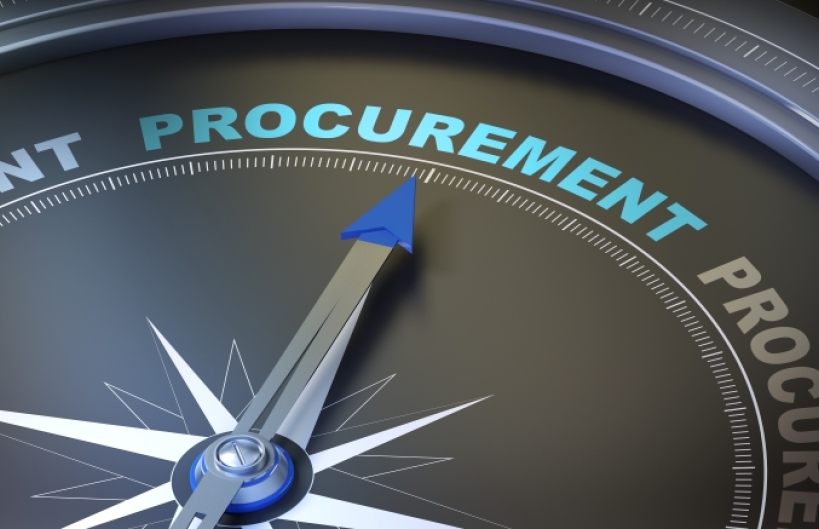It's amazing how quickly an industry can change. Thinking back to the early 2000s, hospital pharmacy procurement had successfully transitioned from a break-bulk/surplus purchasing style to just-in-time (JIT) purchasing and maintaining minimum inventory on the shelf.
AmerisourceBergen, McKesson, and Cardinal Health (the "big 3") had consolidated much of the wholesale and distribution industry and made improvements to their operations, largely alleviating the pressure of hospitals to maintain a large stock of medications. Pharmacy buyers, in turn, spent a good part of their day calculating inventory turns and working to get them as high as possible, only ordering what they needed to maintain a 72-96-hour on-hand inventory.
The success and capital efficiency of the JIT model along with continued adoption of pharmacy automation helped to reduce the need for medication storage space in most hospitals — so much so that rooms that had been used for storing medication were repurposed or taken by other departments. Health systems were confident that they could rely upon their pharmacy supply chain to distribute the medications they needed across their system in a timely manner, and central operations were focused on repackaging, IV compounding, and other labor-over-drug-cost initiatives where utilizing technician labor could bring medication costs down.
Forced to Adopt a Hybrid Model
Fast forwarding to today, confidence in JIT purchasing has flagged as medication availability disruptions have increased. Recalls, manufacturer shutdowns, bankruptcies, overseas logistics challenges, and even simple market economics have led to major medication outages and pharmacies simply running out of drugs.
This shift in stability is motivating hospitals and buyers to look for ways to create supply guarantees or reserve stock for vital medications, many times opting for additional on-site physical inventory — the exact opposite direction from JIT models. We're seeing a growing number of hospital systems building their own warehouses and taking on the burden of self-distribution to ensure additional days of drug on hand.
Compounding and repackaging efforts have seen a similar reversal of strategy. Given the severe labor shortages in the hospital pharmacy space, many hospitals are eager for a partnership with a 503B compounding pharmacy to outsource labor-intensive IV admixture processes. Similarly, outsourcing repackaging efforts or simply purchasing higher cost pre-mix products over products that require manual labor for manipulation is almost a foregone conclusion. The additional cost of medications is moot if there is no one available to do the work.
Repackaging and compounding channels have shown their own vulnerabilities as quality, supply, and lead-time issues have plagued the industry. In past years, the decision to "build versus buy" an IV product could be thoughtfully approached, and the transition planned and plotted. These days, this decision to insource or outsource a product is immediate and driven by unpredictable factors in both medication and labor availability alongside recurring 503B facility shutdowns.
One thing that has remained consistent: the mindset of reducing costs by better utilizing people and technology is as salient today as it was 20 years ago. Pressure on hospital pharmacy to "do more with less" has always been there, but the context of "supplying more medications at lower costs" has shifted to "performing more services with fewer available people."
The Greatly Changed — and Expanded — Role of Pharmacy Procurement
With these developments, pharmacy procurement jobs have exploded in complexity. Instead of simply walking the shelves, identifying gaps in inventory, and filling in the blanks, today's pharmacy buyer is burdened with managing questions like: Will this hurt my group purchasing organization compliance? Is this product built in our systems? Does this medication need specific accommodations for 340B issues? Are the correct contracts and prices loaded for our class of trade? Will we meet our committed volumes and achieve tier discounts?
A pharmacy buyer today is not only the inventory manager but an operator with proficiency in regulatory and contractual obligations, dynamic inventory flows, channel relationship management, analytics, and business intelligence. With so many responsibilities, it's become more difficult to track where money is moving, and more challenging to keep up with market dynamics that affect purchasing decisions and acquisition.
For these reasons, the role of buyer is no longer a simple add-on responsibility for a technician or pharmacist to complete in their downtime. Despite the lack of formal training options in the market, procurement has become a specialized position requiring significant investments in training, recruiting, and retention. Centralized purchasing — a model health system pharmacies are largely moving toward as hospitals consolidate — places these duties on dedicated buyers to ensure optimal procurement and distribution of drugs. This model has demonstrated that the appropriate authority and accountability invested in proficient pharmacy buyers can result in ongoing and meaningful outcomes at significant scale.
Achieving An Optimal Balance Between People and Solutions
While pharmacy procurement has become more complex over these last two decades, we are seeing health systems navigate these increased responsibilities successfully leveraging technology and partnerships. By identifying solutions that empower a leaner pharmacy team and help them to prioritize and complete their work efficiently, hospitals can eliminate much of the
The most traditional approach is to use outsourced labor to complete the lower impact work. In the growing field of pharmacy procurement where expertise is hard to come by, there is tremendous value in the perspective gained from working with multiple health systems, but the questions remain: How do you ensure third parties work exclusively in your interest? How fast can you turn around someone else's employee to focus on your highest need in a market where hours matter?
Depending on the firm, there may be inherent conflicts between an outsourcing entity's financial interests and those of the health system. Finding objective and impartial assistance can be difficult, and the higher the degree of dependency on external talent, the higher the chances are that system-specific decisions and safeguards are at risk. Loss of control, lack of accountability, and the inability to shift priorities effectively, especially in a health system pharmacy, can feel like a tremendous disadvantage in a fast-paced market.
On the other end of the spectrum, we hear of "total automation" (i.e., "single pane of glass") solutions touted for so many processes, but more often than not these solutions require tremendous technical resources to implement and maintain. For large teams working in revenue cycle, the ratio of technical resource to claims processors have been advantageous. In pharmacy, we've more often seen these additional technical responsibilities piled onto an already-busy EHR, pharmacy IT, or pharmacy operations teams, and the additional channels needed to push change causes delays in execution. If you perform any critical analysis to select medications for a hospital, someone will have to teach the machine why you choose the way you do and how to handle the many exceptions you consider along the way.
Rather than subsidizing labor with low-accountability outsourcing or attempting to replace it entirely with high-complexity, high-maintenance total automation, the key to making progress while maintaining ownership has been identifying crucial touchpoints that cannot or should not be performed by an external vendor or technology and helping employees execute on these touchpoints rapidly with high-context guidance and oversight.
This is not a new idea - to reduce fraud, the group at PayPal was able to scale using automation to screen billions of dollars in transactions, identify those with the highest likelihood of fraud, and pass those transactions to a team for manual review. More recently, Latent Health advertises using artificial intelligence to identify and automate steps for prior authorization that are trivial or duplicative, leaving just those components that require trusted clinician review. Claims processing automation tools that forward exception cases to specialist teams have made tremendous impacts for health systems and spawned several publicly traded and successful companies in the process.
For all these tools, it's all about getting the information that needs to be "touched" to the people who need to see it, while ensuring those same people don't spend valuable time slogging through things they do not need to see. When done right, this makes the people involved more useful, enables them to use more of their valuable skillset, and gives them ownership of these important processes. For the complex, volatile world of pharmacy purchasing, where flexibility, context, and timeliness are paramount for getting medications safely to your patients, choosing the correct path on your quest to "do more with less" will pay significant dividends.



